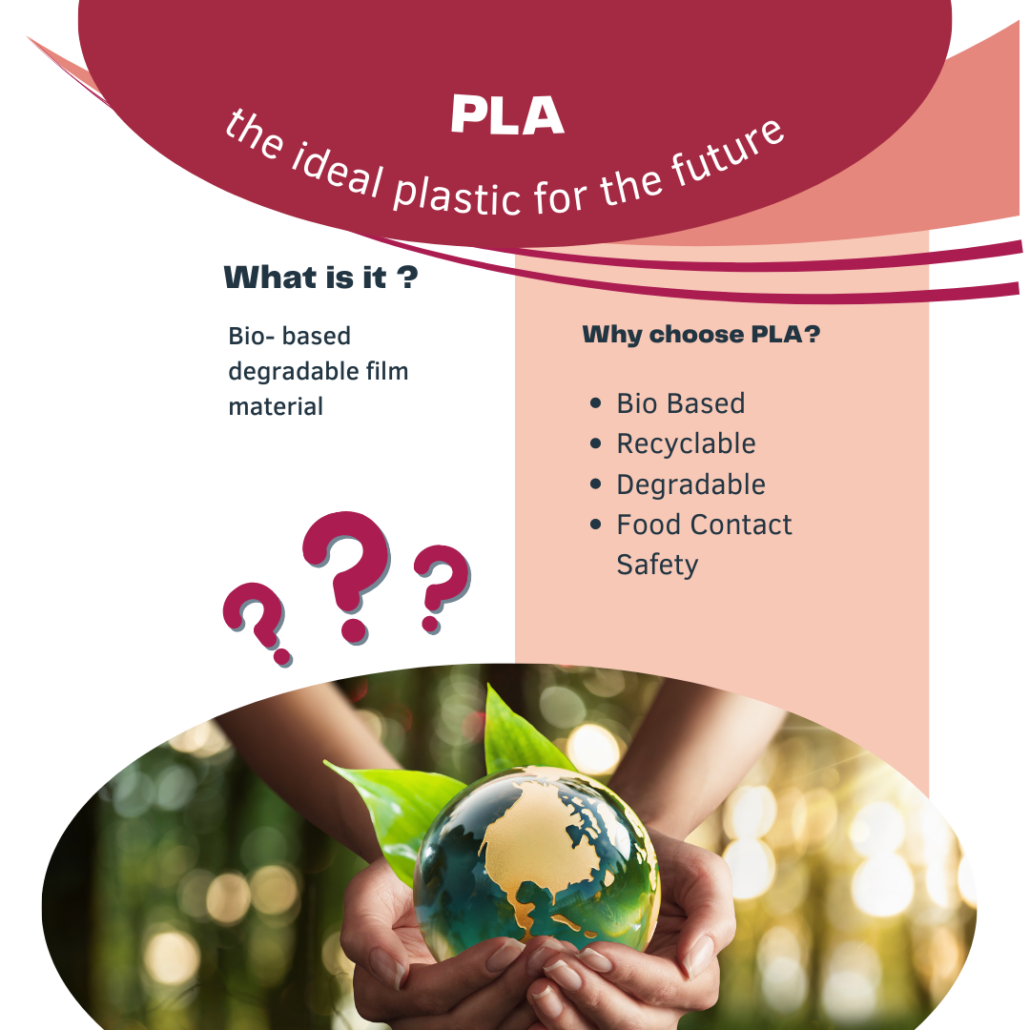Everyone is trying to get rid of plastic and we are here talking about it. But we are not talking about the plastic you think, but about the PLA otherwise called plastic of the future. But what is it specifically?
The PLA has been on the market for many years, and its demand continues to grow. More and more companies are adopting more eco-sustainable and easy to dispose materials. Here the PLA is the perfect candidate. It is a thermoplastic polymer that derives from natural sugars, such as cornstarch and sugar cane. Pla may look like plastic in all respects; white or transparent in color, rigid, with properties similar to classic plastic.
Being resistant to oils, greases and chemicals, it effectively contains perfumes and oxygen, and therefore can also be easily used for food packaging. It is therefore a biodegradable material of organic origin. The natural origin (from plants) and the low environmental impact for production and the possibility of disposing of it make it perfect for large-scale use. But let’s see specifically the main features:
- Organic Origin: The PLA shows the lowest carbon emission. The unit weight of carbon emission of PPP is only 26% of PET and 32% of PP.
- Recyclable: lactide can be recycled by catalytic reaction and achieve a high recovery rate of up to 98.5%.
- Degradable: by composting, PLA can be 100% biodegraded within 180 days under composting conditions with final results of H20 and CO2.
- Safety in contact with food: The monomer of PLA is lactic acid, which is a food additive commonly used in the food, wine and pharmaceutical industries.
Disposal options
PLA can be disposed of in a variety of ways, including:
- Composting: PLA is 100% biodegradable.
- Landfill: Typically, PLA takes 2-5 years to degrade in landfill. The end result does not cause groundwater pollution, does not harm plant growth and does not waste cultivated land.
- Inceneration – the degree of heat of combustion of PLA is low. When completely burned sufficiently, it produces only H2 = and CO2 and causes no air pollution.
- Recycling: PLA can be recycled and lactic can be obtained by catalytic reaction.
But be careful: the fact that it is degradable does not mean that it can be abandoned in the garden or on the street. The conditions of biodegradation are very precise: it is necessary that the temperature of the environment in which it is located exceeds 60 degrees, and the humidity is greater than 20%.
But what does it mean to choose biodegradable packaging?
Paying attention to the environmental impact will give your product that added value on which the markets are focusing more and more. For PNP it is essential the continuous research and development of eco-sustainable materials that meet the needs of its customers. PNP has in fact developed and put in the catalog numerous bio-degradable items that can meet this demand. The continuous research towards eco-sustainable products has meant that PNP adopts PLA which is a plastic of organic origin and completely biodegradable. The “Compost-Film”, produced by the PLA, in fact, comes from nature and returns to nature.
Compared to fossil-based materials, PLA generates 70% less CO2 emissions. It is completely bio-based and recyclable thanks to the catalytic reaction with a recovery margin of 98.5%. The “Compost-Film”, produced by PLA, is in fact 100% biodegradable in 180 days, through industrial composting.
This product will be presented by PNP at the next edition of Christmasworld, which will be held from 3 to 7 February 2023 in Frankfurt, with an entire wall dedicated to eco-sustainable products, including the new entry “Compost-Film”.
This new material, highly versatile and usable for the most varied uses, as well as normal polypropylene, is offered on a wide range of products: single-fold and non-fold reels, sheets, envelopes and pieces.
We are waiting for you
Would you like to know more about PLA? Come and visit us at the largest international fair dedicated to Christmas. What better time to make conscious and eco-friendly choices. We will present you the whole range of eco-sustainable products and show you why choosing such packaging will give added value to your product.
See you there



